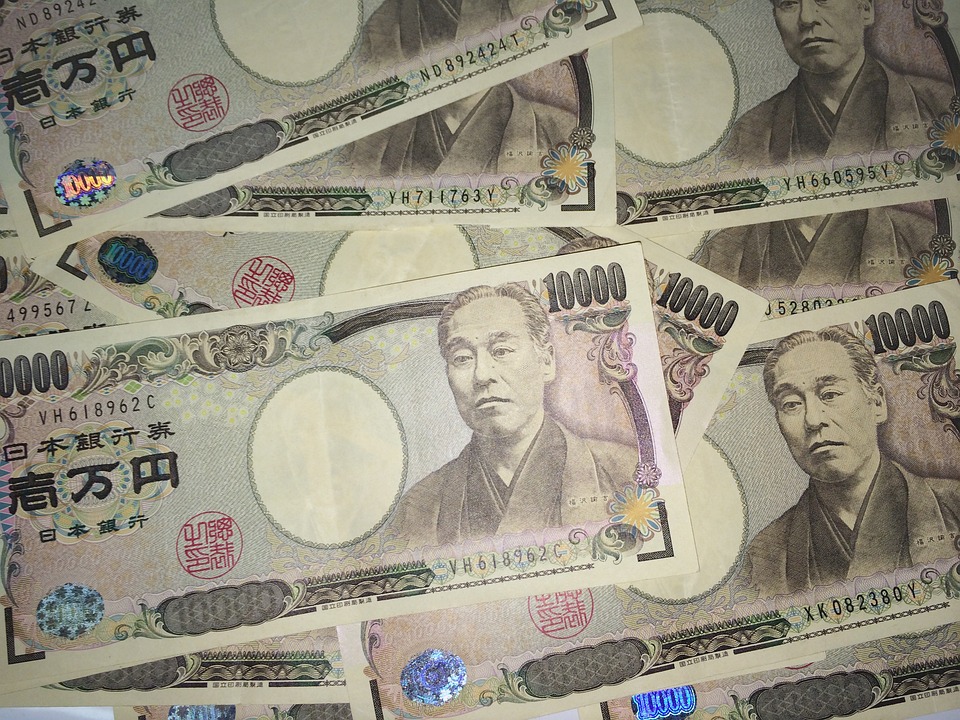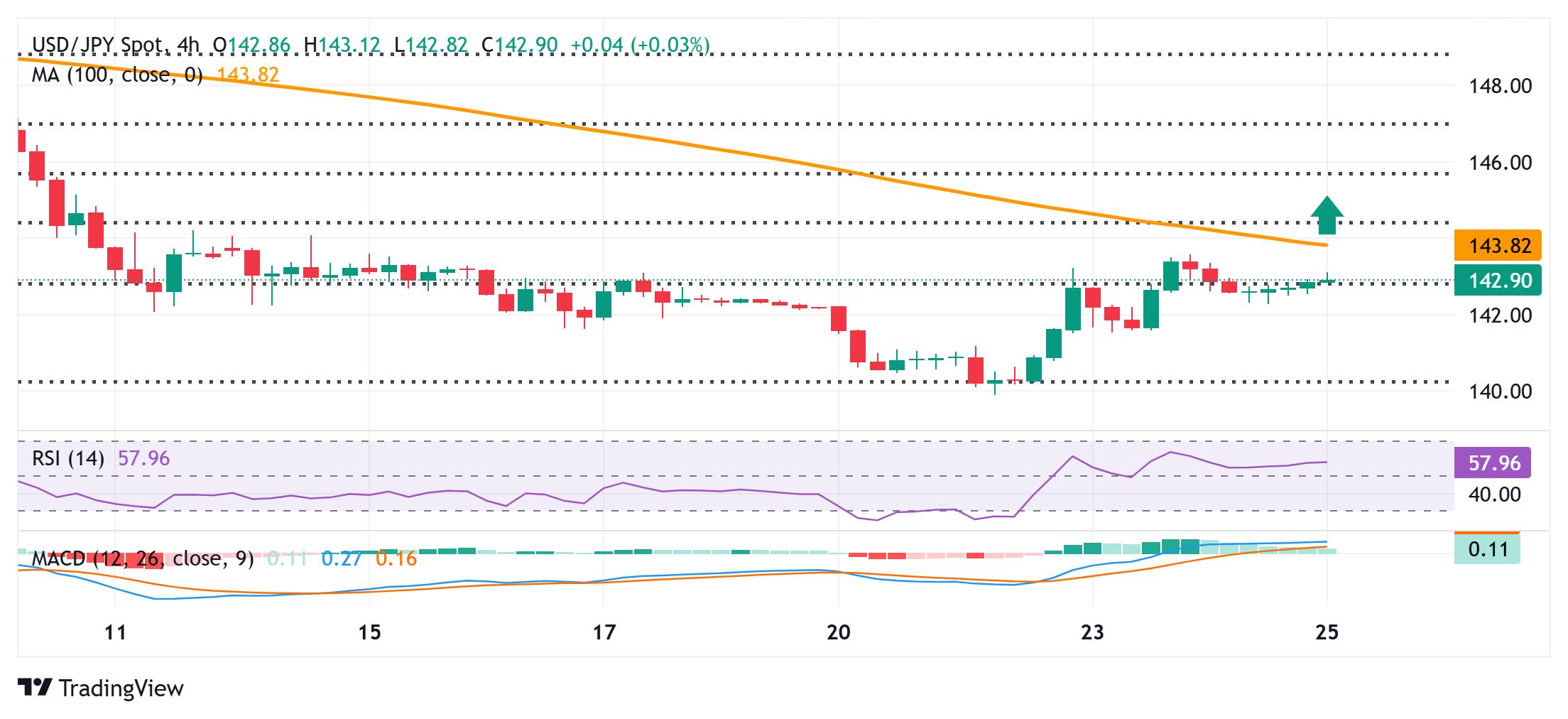Japanese Yen Drops To Two-Week Low Against USD Amid Optimism Over A Possible US-China Trade Deal

Image Source: Pixabay
- The Japanese Yen ticks lower as US-China trade deal optimism undermines safe-haven demand.
- Strong Tokyo consumer inflation figures reaffirm bets for additional rate hikes by the BoJ in 2025.
- Dovish Fed expectations might keep a lid on any meaningful USD upside and the USD/JPY pair.
The Japanese Yen (JPY) continues losing ground through the Asian session on Friday and drops to a nearly two-week low against its American counterpart in the last hour. Hopes for the potential de-escalation of trade war between the US and China remain supportive of a positive risk tone, which, in turn, is seen denting demand for the safe-haven JPY. Adding to this, the emergence of some US Dollar (USD) buying lifts the USD/JPY pair further beyond mid-143.00s.
Meanwhile, government data showed that consumer inflation in Tokyo – Japan's capital city – accelerated sharply in April and reaffirms market bets for more interest rate hikes by the Bank of Japan (BoJ). On the other hand, Federal Reserve (Fed) officials showed willingness for potential interest rate cuts. This might keep a lid on any meaningful upside for the USD and help limit deeper losses for the lower-yielding JPY, warranting caution for the USD/JPY bulls.
Japanese Yen continues to be undermined by hopes for a US-China trade deal
- US President Donald Trump told reporters that the US and China held discussions on Thursday to help resolve the trade war between the world’s two largest economies. Moreover, a White House official said that lower-level in-person talks as well as a phone call between US and Chinese staff had taken place this week.
- Adding to this, China is reportedly mulling to suspend its 125% tariff on some US imports. This fuels hopes of a quick US-China trade resolution, boosts investor confidence, and weakens demand for safe-haven assets like the Japanese Yen.
- However, China's Foreign Ministry spokesperson Guo Jiakun told reporters on Thursday that China and the US have not conducted consultations or negotiations on tariffs. Furthermore, the prospects for additional interest rate hikes by the Bank of Japan should limit deeper losses for the JPY.
- Data released earlier this Friday showed that Tokyo Consumer Price Index (CPI) grew 3.5% year-on-year in April from 2.9% in the prior month. Adding to this, Tokyo core CPI, which excludes volatile fresh food prices, rose 3.4% YoY, or a two-year high, compared to the 3.2% expected and sharply higher than the 2.4% in March.
- Furthermore, a gauge that excludes both fresh food and fuel costs and is closely watched by the BoJ rose 3.1% in April from a year earlier after a 2.2% rise in the previous month. This points to broadening inflation in Japan and gives the BoJ headroom to raise interest rates further after a 50 basis point rate hike earlier this year.
- On the other hand, Federal Reserve Governor Christopher Waller said on Thursday that he would support an interest rate cut if tariffs start weighing on the job market. Separately, Cleveland Fed President Beth Hammack stated that a rate cut as soon as June could be possible if clear evidence of economic direction is obtained.
- This counters Fed Chair Jerome Powell’s remarks last week that the US central bank is well-positioned to wait for greater clarity before considering any adjustments to our policy stance. Nevertheless, traders are still pricing in the possibility that the Fed will lower borrowing costs at least three times by the end of this year.
- The prospects for more aggressive easing by the Fed, to a larger extent, overshadowed mostly upbeat US macro data released on Thursday. In fact, the US Department of Labor reported that Initial Jobless Claims increased modestly to 222,000 for the week ending 19 April and pointed to continued labor market resilience.
- Furthermore, the US Census Bureau reported that Durable Goods Orders surged 9.2% in March, marking the third consecutive monthly increase and far exceeding market expectations of a 2% rise. Transportation equipment, which also recorded its third straight monthly gain, led the increase with a jump of 27% in April.
- Meanwhile, the divergent BoJ-Fed policy expectations, along with hopes that Japan will strike a trade deal with the US, should act as a tailwind for the lower-yielding JPY. Japan's chief negotiator, Economy Minister Ryosei Akazawa, will hold a second round of trade talks with US Treasury Secretary Scott Bessent next week.
USD/JPY might face stiff resistance near the weekly swing high, around the 143.55 region

The USD/JPY pair showed some resilience below the 23.6% Fibonacci retracement level of the March-April downfall and the subsequent move back above the 143.00 mark favors bullish traders. Moreover, oscillators on hourly charts have been gaining positive traction and support prospects for additional gains. However, technical indicators on the daily chart – though they have been recovering – are yet to confirm a positive bias. Hence, any further move up might confront stiff resistance near the 144.00 round figure. Some follow-through buying, however, could lift spot prices further to the 144.40 area, or the 38.2% of Fibo. level, which if cleared decisively should pave the way for a further near-term recovery.
On the flip side, dips below the 23.6% Fibo. level might continue to attract some dip-buyers near the overnight swing low, around the 142.30-142.25 region. This is followed by the 142.00 round figure, below which the USD/JPY pair could slide to mid-141.00s en route to the 141.10-141.00 region. The downward trajectory could extend further towards intermediate support near the 140.50 area and expose the multi-month low – levels below the 140.00 psychological mark touched on Tuesday.
More By This Author:
USD/JPY Slips As Fed Cut Hopes Rise And Tariff Confusion Grows
USD/CAD Steady As U.S. Dollar Dips On Tariff Unease And Mixed Data
AUD/JPY Bounces Off Daily Low, Trades With Mild Negative Bias Around 91.00 Mark
Disclaimer: Information on these pages contains forward-looking statements that involve risks and uncertainties. Markets and instruments profiled on this page are for informational purposes only ...
more


